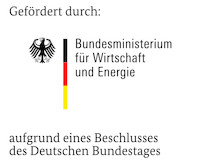
ReWork: Prozesssicheres Re-Work an dünnwandigen, gekrümmten CFK-Oberflächen mittels photonischer Systeme und piezo-gestützter Qualitätskontrolle

The joint project ReWork deals with the rework of aviation components made of carbon-fibre reinforced plastics (CFRP). With the aim of making the production of corresponding components more efficient, it is necessary to reduce waste during the manufacturing process. The industrial rework on flaws due to production, but also to wear and tear, comes increasingly into the focus. The rework process is defined as a precise, automated process for the rework on components made of fibre composites with the aim of improving their properties, including an integrated methodology for automated quality control.
Currently, there is no reliable process particularly for the surface rework of thin-walled and complex CFRP components. ReWork’s aim is to redress the problem by automating and thus optimising each step of the process chain. The removal of the flaw is examined as well as the patch repair by new CFRP layers and their hardening, until the repair is completed. The insights gained in this process are transferred to a guideline which supports the user of a CFRP surface rework. At the same time, this guideline serves as a basis for possible, subsequent certification activities.
Detected flaws in thin-walled or complex CFRP surfaces are eliminated by laser radiation. Laser technology is able to eliminate the typical layer bonding of CFRP components layer by layer, thus enabling a precise layer reconstruction. When inserting the patch layers, the piezo elements are integrated in the repair spot. Piezo actuators are centrally embedded with the patch, whereas piezo sensors are placed out of the repair spot. By evaluating the piezo voltage signals via adapted algorithms during the hardening process, it is possible to monitor the latter and finally to control joint strength’s quality. Due to the piezo sensors’ and actuators’ insertion, the evaluation will be also possible during future maintenance intervals.

Fig. 1: Schematic representation of the quality control of a repaired CFRP surface

